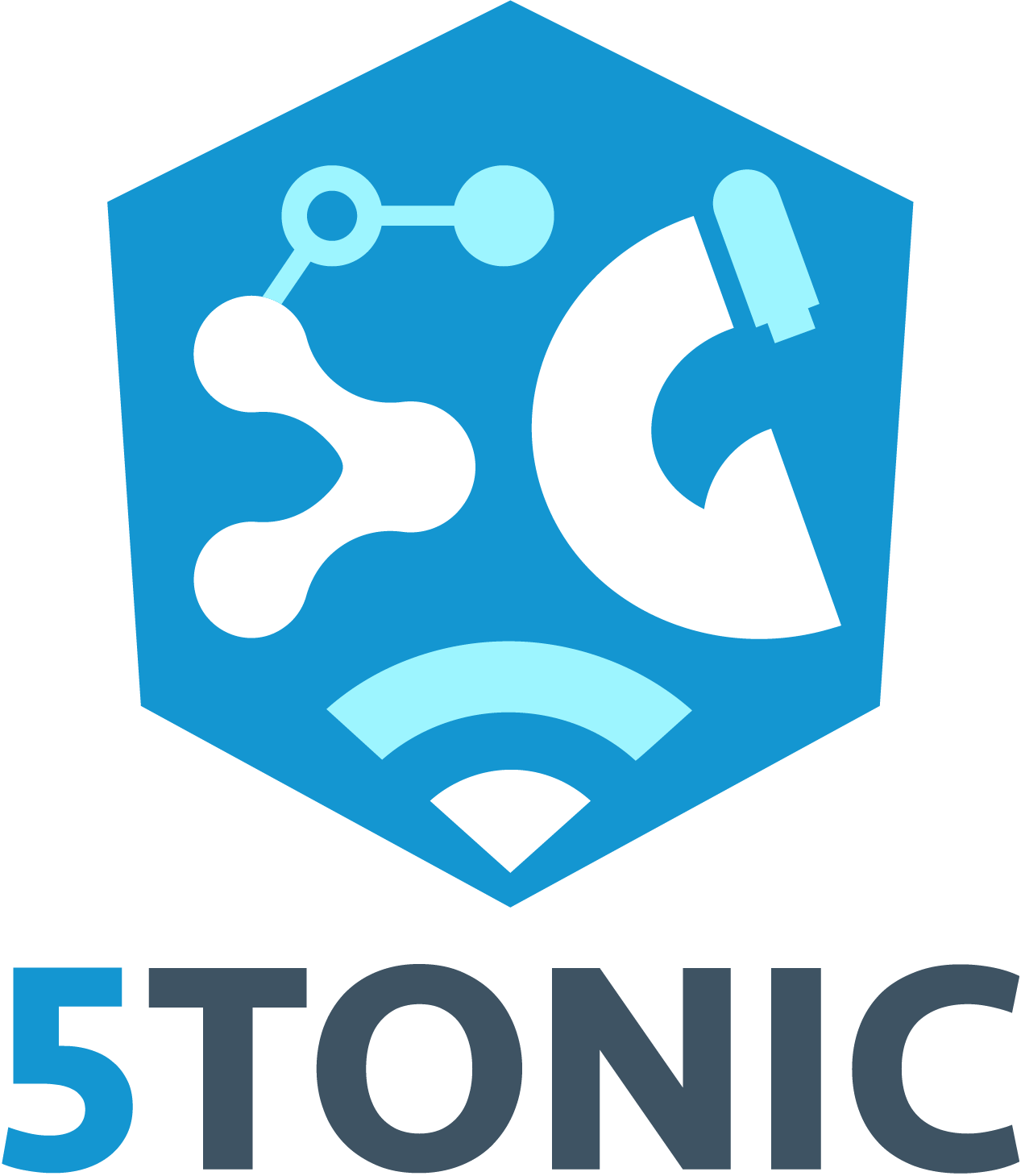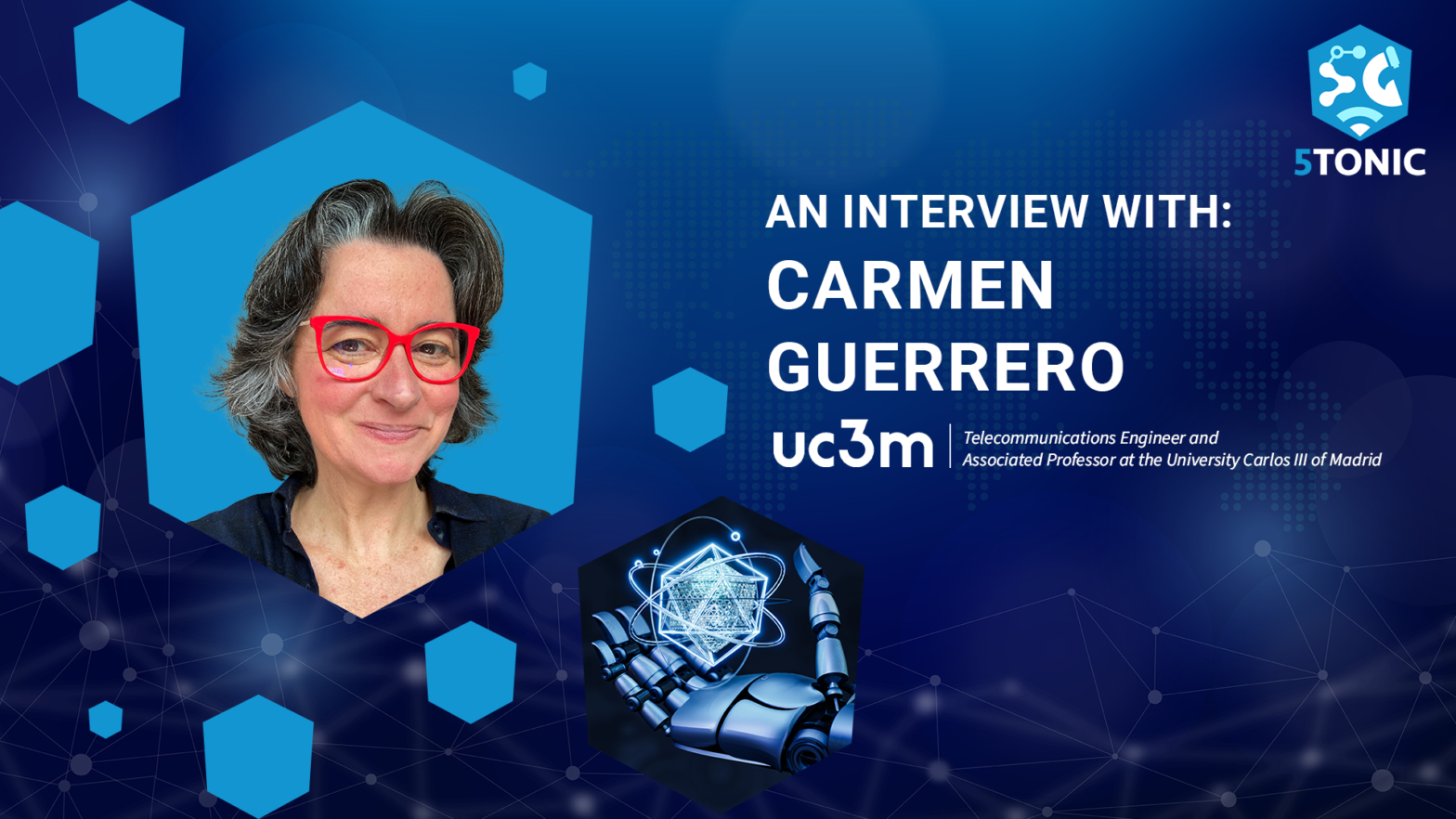Interview with Carmen Guerrero, Telecommunications Engineer and Associated Professor at the University Carlos III of Madrid
With the collaboration between the University Carlos III of Madrid and 5TONIC, which has served to make available the use of different 5G-based infrastructures to improve the development of research and new technologies within the sector, we have interviewed Carmen Guerrero, Telecommunications Engineer and Associated Professor at the University Carlos III of Madrid.
Carmen Guerrero, who has 30 years’ experience in the sector, spoke to us about the usefulness of working with the 5TONIC laboratory in the field of engineering, highlighting the variety of possibilities derived from the new communication networks and computing. During this interview, we will reveal the internal synergies between the laboratory and the UC3M, as well as her vision of the future of the industry and the various projects that are being carried out in collaboration with the most important players in the telecommunications panorama.
Who is Carmen Guerrero? Tell us who you are personally and professionally.
I have been a telecommunications engineer for 30 years, developing my work in the university and research field. I studied at the Technical University of Madrid where I started my research career, which has taken me to 5 universities, one of them abroad. I started my PhD at the Autonomous University of Madrid, then I moved to the University of La Coruña, where I finally finished my doctorate. Twenty years ago, I returned to Madrid, to the Universidad Carlos III de Madrid, and I also had the opportunity to get to know the Computer Lab at the University of Cambridge, one of the most enriching experiences in my university career.
The areas in which I have developed my research career have been real-time embedded systems, design of telecommunications network management systems, energy efficiency analysis, that is so fashionable on social media nowadays, and the deployment of content delivery environments or ecosystems, from a system as well-known as Big Torrent, to what we understand today as large platforms, such as Netflix.
Recently I have been working on the deployment of network infrastructures for researchers to test, creating different tools in the field of Digital Science. As in other scientific fields, those of us involved in communications network research need instruments to carry out our research, and this is where I am currently doing my main work.
What is UC3M's trajectory within the technological ecosystem in Spain?
The university has been training telecommunications engineers for many years in the ICT sector, where there is a great demand. In addition, our engineers have one of the best employability rates, so I believe that the University Carlos III of Madrid trains good engineers and enriches the demand in the technology sector in Spain.
What role does Universidad Carlos III de Madrid play in 5TONIC?
Since the beginning of the laboratory, Universidad Carlos III de Madrid is one of the members, maintaining a close collaboration with the two founders, Telefónica and IMDEA Networks Institute. Being collaborators of 5TONIC, allows us to execute and develop projects that require the use of equipment and infrastructures that researchers do not always have at hand.
In this case, 5TONIC facilitates the access of researchers like us to technologies that are pre-commercial or that have been recently standardized, being able to experiment with them. Thus, University Carlos III of Madrid, by being part of this environment, can establish important relationships with other industry players, and at the same time, carry out different research or develop new technologies within the laboratory.
What does being part of a laboratory like 5TONIC bring to UC3M?
5TONIC enables us to have a next generation 5G network and at the same time, technologies beyond 5G that are not yet commercialized in the industry. In the same way, this collaboration provides us with a dynamic computing environment and software network orchestration, which is very expensive for a researcher to build in his own lab.
On the other hand, we pose new challenges and questions that we want to answer in our research. Many of them arise from European projects or programs at national and regional level, or even from projects that we carry out with the industry itself. In this way, 5TONIC provides an ecosystem in which we can provide solutions to these challenges and questions.
What is the current panorama of the infrastructures for research and experimentation in networking in our country? Where is this technology evolving towards?
Until now, each researcher formed his own test bed to run his algorithms, his protocols and the modifications to those protocols that were being developed. Now, however, it is expected that there can be synergy between them through large internationally interconnected experimentation laboratories. It is in this scenario that new research and experimentation infrastructures are beginning to be deployed in the field of communications and computer networks.
In this case, 5TONIC is one of the laboratories that can evolve towards an interconnected experimentation infrastructure at international level. The ESFRI (European Strategy Forum on Research Infrastructures) is a strategic instrument at European level to develop scientific integration and strengthen the international environment through projects and infrastructures at national level that are interconnected so that researchers can have access from their countries.
Are any projects based on the building of new research infrastructures being carried out and what do they consist of?
For the last 3 years we have been participating in an initiative called SLICES, which is an international project that is present in the roadmap of the ESFRI forum, and which was selected in July 2021, together with 18 other projects, for deployment. The SLICES project (Scientific Large-scale Infrastructure for Computing/Communication Experimental Studies) aims to create a large-scale scientific infrastructure for experimental studies in computing and communication. Our ambition is to become a reference center that is able to provide an impactful research infrastructure in the digital sciences and to build something that allows researchers to use it as a tool for their experiments.
This is a long-term project, in which we have been designing what this infrastructure can be for 3 years now and we have recently entered its preparation phase. In this case we are talking about a project that mobilizes significant investment from the countries involved, as well as from different institutions, and which aims to provide a service to researchers over the next 10 years.
How do new 5G network infrastructures influence the new ecosystems of research infrastructures?
The 5G part of the network, or what we call today beyond 5G – 6G, is part of a key segment of the network infrastructure. An important example of this is 5TONIC, which allows us to have a 5G network deployment and to be able to experiment on it, something that, if we are in the communications business, we cannot do in our lab because we do not have the necessary infrastructure.
This type of research infrastructure provides access to 5G networks, or 6G networks already under development, and the necessary distributed computing and data resources. This is relevant because it allows us to have a complete version of all the network elements on which we want to develop certain use cases and on which industry wants to see how their technology works.
What are the possible applications of the networking research infrastructures within different vertical industries?
We have several examples of research facilities within the industrial sector, where we can see infrastructures designed ad hoc for this type of environment.
A very significant example in this sector is the design and deployment of digital twins that creates a totally virtual ecosystem on which it is possible to deploy different services and solutions and measure their performance within this digital environment. Once the corresponding tests have been carried out, it is possible to take these solutions and services to a real industrial environment.
What other technologies are relevant to the advancement of the industry?
There are quite a number of technologies that can be relevant within the industrial environment and within the field of communication networks and computing. One of the aspects that can be most relevant to industry is the availability of data in an open environment.
By handling a significant volume of data that can be extracted from communication networks, we can see algorithms that allow us to apply artificial intelligence technology to this data and we can predict, adapt and enrich these networks in a more intelligent way. So, we think this may be one of the areas where there can be a more significant breakthrough.
How do you think UC3M's role as an innovation player in Spain will evolve?
I believe that, from the current situation of the University Carlos III of Madrid, which is already a site of excellence in terms of research and education, the next step will be to evolve towards an ecosystem integrated with other universities. The objective is to deploy these interconnected infrastructures between the university and other industrial and research centers.
Of course, we will also continue to maintain excellence in training the best engineers, so that in the future they will be able to develop their activity within the scientific and technological environment in Spain.

